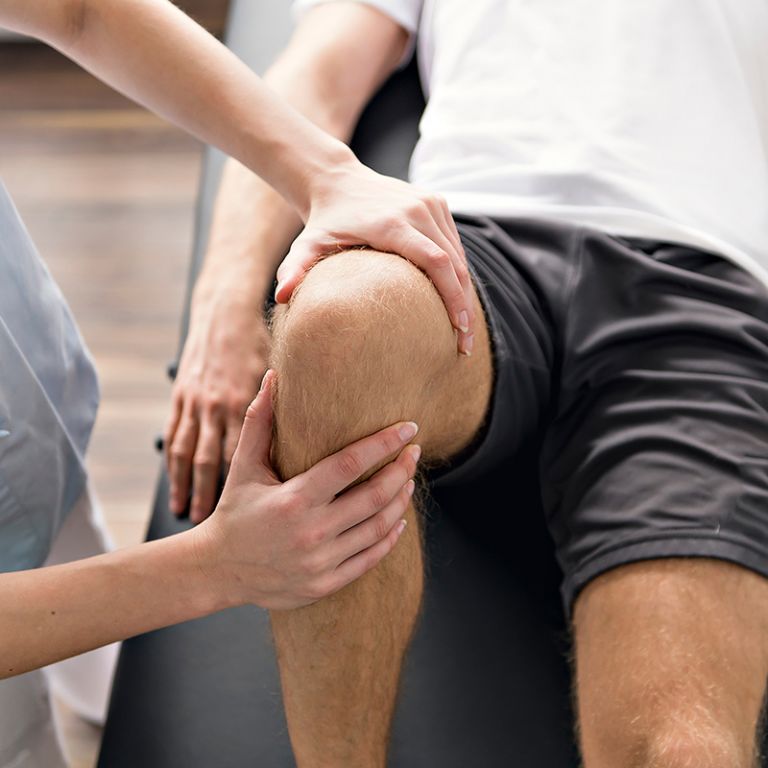A common complaint of runners is heel pain. Many medical diagnoses can be grouped under the symptom of heel pain. These diagnoses include Achilles tendonitis, Achilles tendonosis, plantar fasciitis, and flexor tendonitis. As a physical therapist that specializes in treating running injuries, a frequent question I ask my patients is, “ How intense is your heel pain when you stand and take your first steps in the morning?”
Why are the symptoms so severe in the morning? Why is it that the runner can frequently “walk it off” and continue with training only to experience the same (or worse) symptoms the next day? Treating this common and complicated condition requires that runners understand the physiology of the healing process.
The tendons and fascia that surround the calcaneus (heel bone) are primarily composed of fibrous, rope-like cells called collagen. These tissues are in a daily flux of breaking down and rebuilding. This tissue turnover is especially active in runners because of the increased stresses they put on their bodies. The Achilles tendon, plantar fascia, and toe flexor musculature must withstand huge stresses because of their role in decelerating the impact of up to 6-10 times our body weight during running. At the cellular level, the decelerating forces tear collagen fibers. One of the most amazing things about this process is that the tissues can repair themselves. And, if we don’t overstress our tissues (by running too far, too fast, or both), our tendons and tissues can come back stronger. That is how we accomplish those PR’s.
However, if runners do not allow their tissues to recover properly, injuries occur. Runners can experience acute or chronic injuries. The following explanation and advice will focus on runners with chronic heel pain. With a chronically injured tissue, the body produces collagen in an excessive and disorganized manner. A good analogy is that instead of the collagen fibers’ normal alignment appearing as uncooked spaghetti noodles lined up in a box, the traumatized and damaged fibers appear as cooked spaghetti in the bottom of the pot. This process is called collagen cross-linking.

Much of our healing occurs at night while we sleep. Before maturation, collagen fibers are quite delicate and malleable. During sleep, a pointed foot position (due to the weight of our foot and the bed covers) causes the collagen fibers of the foot and ankle to shorten. Upon standing and stepping out of bed in the morning, the shortened collagen fibers have not had adequate time to reach their full strength. That sharp pain that occurs with weight bearing is the shortened collagen fibers tearing apart. And so the process starts again – every morning.
I cannot stress enough the importance of proper positioning of tendons during bouts of prolonged immobilization, such as sleeping. If collagen fibers are allowed to shorten and undergo cross-linking, runners’ tissues will not adequately support their body weight without re-tearing. Placing a light stretch on healing tissues influences the length and alignment of the new collagen before it reaches the maturation phase and extensive cross-linking occurs. A gentle, sustained stretch throughout the night followed by a gentle manual stretch is vital in preparing the tissues for weight bearing. After the stretch, it is important to protect the tissues with proper shoe wear. Shoes or sandals must be right next to the bed and convenient to put on first thing.
I have had great results with my running patients if they follow three pieces of advice.
- Wear a splint that stretches the heel and plantar foot structures (night splint, Strassberg sock).
- Very gently stretch the tissues before getting out of bed. Sit with knee straight and towel looped around left foot. Gently pull on towel until stretch is felt in calf. Hold 30 seconds.
- Slip into a supportive shoe or sandal for your first steps. If you have Achilles problems, a higher heeled shoe is effective. Plantar fasciitis may respond better to a softer sandal with arch support.
[Note: some severe cases of Achilles tendonitis/tendinosis may not tolerate a night splint or stretching]
Hopefully this information will allow you to understand and treat your pain. If you continue to be challenged while returning to running, make an appointment with a physical therapist that specializes in treating runners in your area.
Keep on Running!
This article can be seen in NW Runner, July 2010.
Resources for Runners

Strength Training for Runners
A comprehensive approach to running includes strength training. Incorporating strength training into your program will not only help you improve your power, speed, endurance and balance, but will also help you prevent injury during training and competition.

Stretching for Runners
Perform static stretches after running for muscles that are sore Common areas of soreness in running are the quadriceps at the front of the thigh,

Dynamic Warm-Up for Runners
Dynamic warm ups increase core temperature, muscle temperature, elongates muscles, stimulates the nervous system and helps reduce risk for injury. This type of stretching is best utilized before activity while static stretching should be used to cooldown after activity.
Are you experiencing discomfort with running or other activities?
Our physical therapists can help you return to a pain-free, active life. Our passion is to help every patient reach their goals on their journey to recovery and optimal performance.


